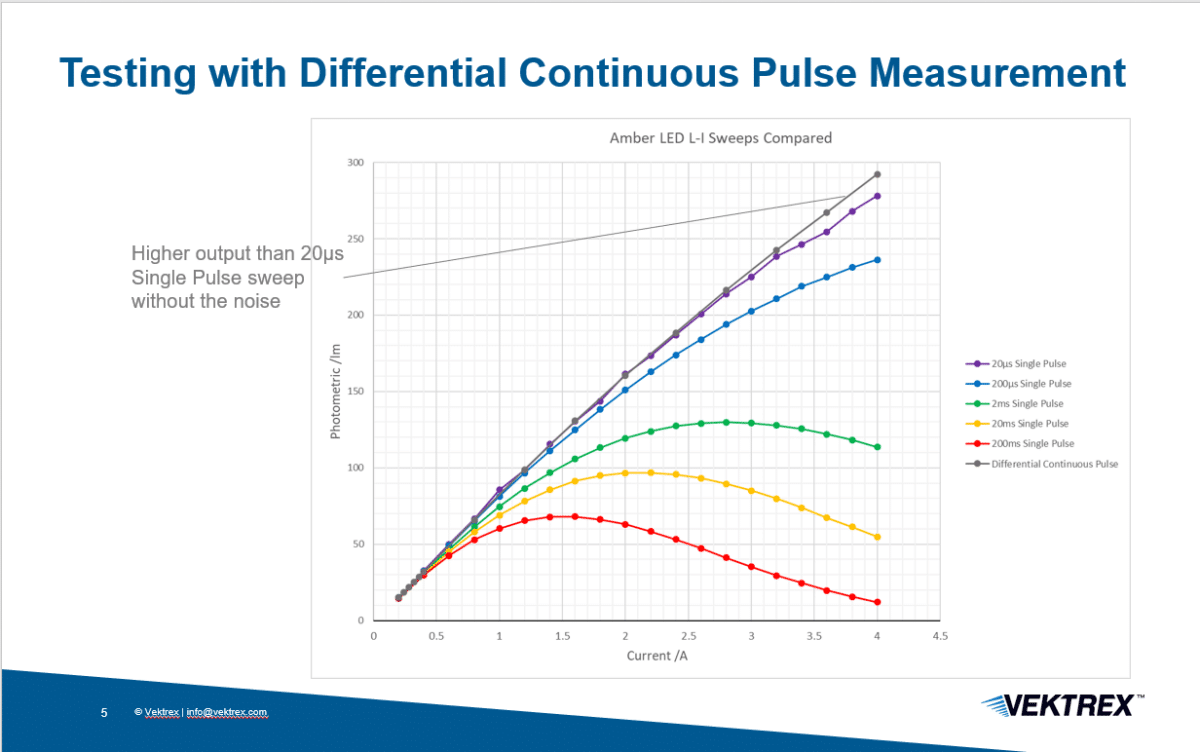Vektrex amber LED light research project identified and confirmed a light measurement anomaly related to light measurement of UV LEDs.
Vektrex actively participates in research focused on improving light measurements for LEDs, LED lights, luminaires and other similar products. Current research is quantifying the measurement errors associated with the various common LED testing methods: Single Pulse, DC, Continuous Pulse and Monopulse. The Instrument Systems CAS-140D, in conjunction with Vektrex pulsed SMU, has allowed us to confirm an amber LED measurement anomaly that was discovered during this research in 2019. It has also enabled us to determine the approximate time constant of the anomaly.

This discovery required the CAS-140D’s 4ms minimum integration time, along with the Vektrex Pulsed SMU‘s ability to precisely digitize and match LED forward voltages obtained with different LM-85 measurement methods. For the experiment, the two instruments were mated together as one, using their precise triggering and delay functions and Instrument System’s SpecWinPro software. This system confirmed an amber LED measurement anomaly that was discovered in 2019. It also enabled Vektrex to determine the approximate time constant of the anomaly.
For the key measurements used in this research, a light measurement window was moved forward and backward in time to probe the LED’s output vs time, while simultaneously a thermal platform controlling the LED temperature was adjusted to match a target Vf. The resulting same-Tj measurements proved that non-phosphor amber LEDs produce 1-2% less light during the first 10-15ms of operation. Other LED types do not exhibit this behavior.
These findings were shared with Lumileds, Cree, Osram, and Nichia. LED experts at these companies do not presently have a theory to explain why Tj does not correctly predict light output, as they had thought. The findings were also presented at the IES LM-85 working group meeting on April 14th 2020. Based upon this result, the IES will be updating the LM-85 test methods.
While the underlying cause of this phenomenom is unknown, it may be an example of what often happens in science: Existing theories seem complete until more precise measurements are available. At that point inconsistencies are exposed that can only be explained by updating the theory.